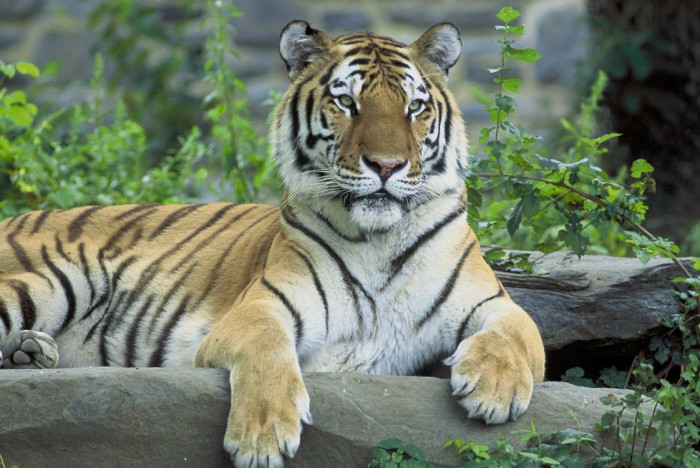Conserving Corridors Crucial to Conserving Tigers
High traffic roads and densely populated urban areas are a severe impediment to tiger movement between their increasingly fragmented habitat. Conserving corridors between protected areas is crucial to the tiger’s long-term survival.
 Image: U.S. Fish and Wildlife Service - Public Domain
Image: U.S. Fish and Wildlife Service - Public Domain Tigers have lost 95% of their historical range, and what remains is highly fragmented. According to a new study, high traffic roads and densely populated urban areas are a severe impediment to tiger movement between fragments. The study, published in Biological Conservation, states that unplanned development in the future will result in loss of connectivity and an increased possibility of extinction for several tiger populations. To ensure future persistence, the authors recommend that protected areas inhabited by tiger populations are managed as a network connected by corridors.
The research was undertaken by scientists from the National Centre for Biological Sciences (NCBS), the Wildlife Conservation Trust (WCT), the Foundation for Ecological Research, Advocacy and Learning (FERAL), and the University of Montana.
The team used genetic information collected on field from tiger faecal samples to understand how landscape features, such as roads and agriculture, impact tiger movement in Central India, a priority area for global tiger conservation. Their findings revealed that high traffic roads and densely populated urban areas are detrimental to tiger movement.
Both urban areas and road traffic will multiply in the future. To understand how tiger connectivity might be impacted by development, the researchers simulated 86 different development scenarios.
“Currently, there is movement of tigers and genetic exchange between protected areas. However, unplanned development, especially loss of forest cover around protected areas will have a strong negative impact on tiger connectivity in the future,” says Prachi Thatte, lead author of the study. “Our results highlight the need for informed development plans that consider biodiversity and connected wildlife populations in addition to human development goals.”
The good news is that tigers do not go extinct in the entire landscape. But the bad news is that several populations do go extinct. Depending on whether development and land use change is unrestricted or managed to maintain forest cover, the extinction outcomes for tigers are different. Unrestricted landscape development results in 25% lower genetic diversity and reduction in tiger numbers as several small populations in the landscape go extinct. Pro-active measures, for example creating buffer zones, protecting corridors and maintaining populations between protected areas, are critical to maintaining viable long-term tiger populations at a landscape scale.
Aditya Joshi, a researcher with the Wildlife Conservation Trust and a co-author of the study, said: “Conservation of corridors and forest areas outside of the protected area network is critical for long-term demographic and genetic viability of many endangered species and future growth and recovery of tiger populations.”
“Our results highlight that along with our efforts to increase tiger numbers within protected areas, a lot more needs to be done to meet the targets we have set for the year 2020,” says Srinivas Vaidyanathan, a researcher from FERAL, and co-author of the study. [India is a signatory to the Global Tiger Recovery Program, which aims to double the tiger numbers by 2020.] “To ensure both objectives are met, the need of the hour is to include conservation goals in regional developmental plans, a nationally important exercise which is seriously lacking.”




Sorry, comments are closed on this post